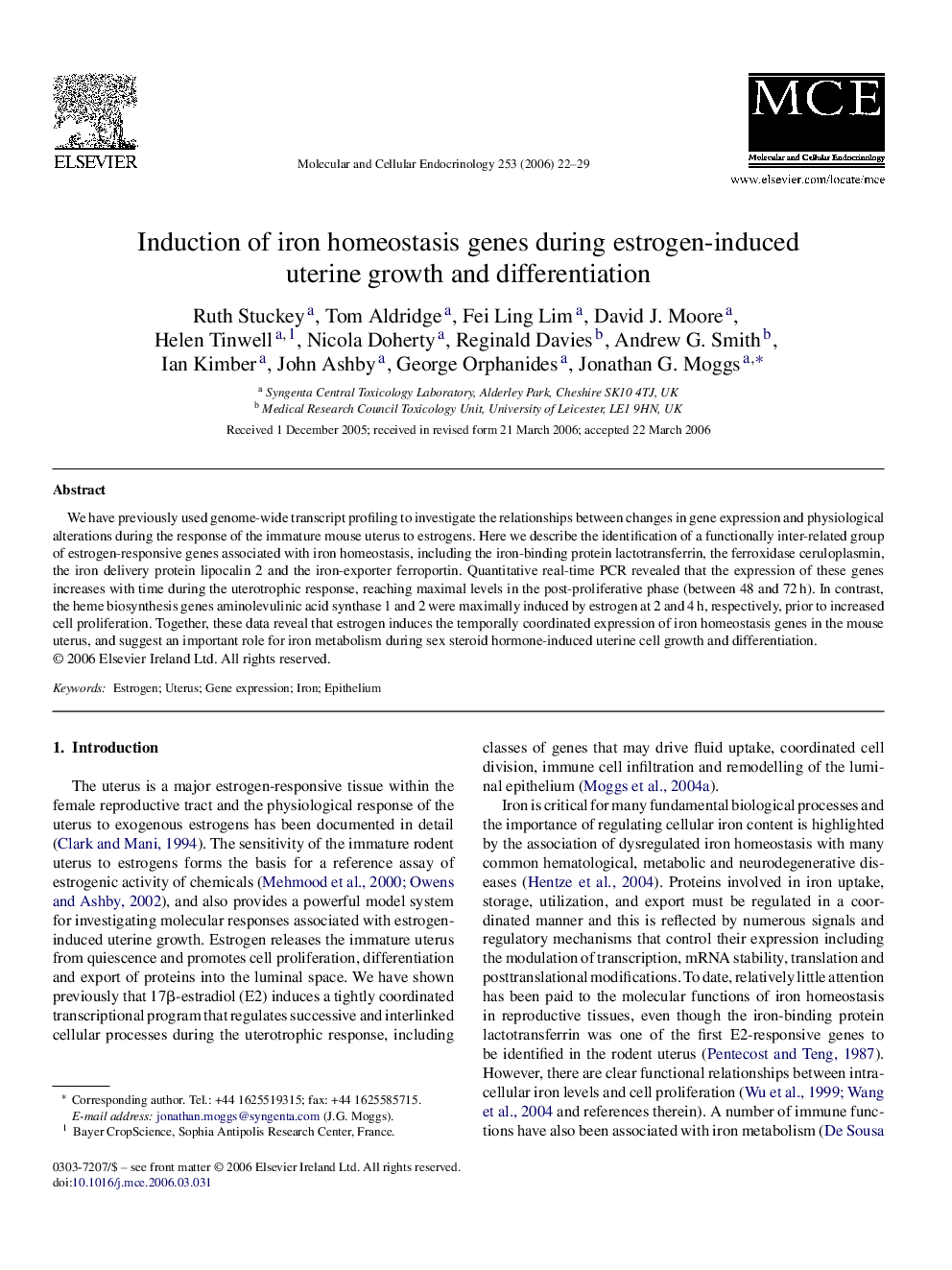| Article ID | Journal | Published Year | Pages | File Type |
|---|---|---|---|---|
| 2198144 | Molecular and Cellular Endocrinology | 2006 | 8 Pages |
We have previously used genome-wide transcript profiling to investigate the relationships between changes in gene expression and physiological alterations during the response of the immature mouse uterus to estrogens. Here we describe the identification of a functionally inter-related group of estrogen-responsive genes associated with iron homeostasis, including the iron-binding protein lactotransferrin, the ferroxidase ceruloplasmin, the iron delivery protein lipocalin 2 and the iron-exporter ferroportin. Quantitative real-time PCR revealed that the expression of these genes increases with time during the uterotrophic response, reaching maximal levels in the post-proliferative phase (between 48 and 72 h). In contrast, the heme biosynthesis genes aminolevulinic acid synthase 1 and 2 were maximally induced by estrogen at 2 and 4 h, respectively, prior to increased cell proliferation. Together, these data reveal that estrogen induces the temporally coordinated expression of iron homeostasis genes in the mouse uterus, and suggest an important role for iron metabolism during sex steroid hormone-induced uterine cell growth and differentiation.
